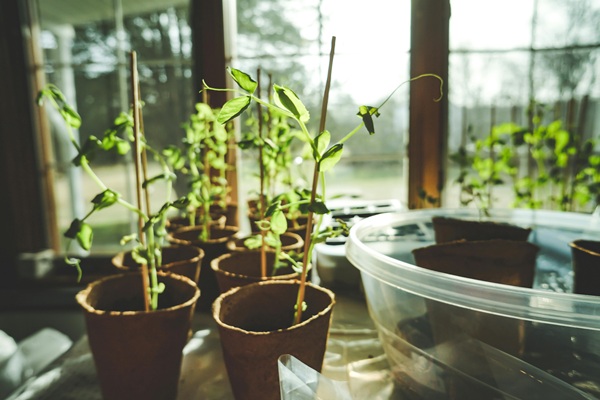
Winter is creeping to an end. For some parts of the USA, winter was relatively mild. For other parts, unexpected snow and cold rendered cities and towns immobile. As the weather gradually gets warmer, gardeners across America are gearing up to start seeds for 2025.
What is seed starting? To put it simply, seed starting is a way to get a jump on the growing season by planting seeds indoors. As a baseline, gardeners begin starting seeds 6 weeks before the last frost date, but this is not a hard and fast rule. If you’re unsure of when the last frost date is for your climate, simply Google “frost date” and you’ll find plenty of websites that will provide you with this information.
Once you’ve determined your last frost date, look at your seed packaging. There should be information about when you can begin sowing your seeds. To provide a baseline, we’ve included start ranges for various vegetables below. Edible vegetables tend to be the most common plant that is started early, but you can also start growing annuals early if you start them indoors.
Cold-tolerant plants: Broccoli, kale, and lettuce (think leafy, green vegetables) tolerate cooler temperatures and can be started earlier, often 4-6 weeks before the last frost.
Cold-intolerant plants: Tomatoes, peppers, and eggplants need warmer soil and air temperatures. These vegetables should be started indoors 6-8 weeks before the last frost.
Once you’ve determined what you’re planning on starting, make sure you have all your supplies. When starting seeds, make sure that each seed is in its own container. Biodegradable containers are recommended due to the ease of transplanting them into your garden once the weather is warmer. Adding peat moss, vermiculite, perlite, or rice hulls to your potting soil will also increase porosity and aeration, which is beneficial when your plants begin germination and are growing their first root. If you have grow lights set up, you’ll see a strong increase in the number of seeds that will germinate. Fluorescent glow lights are fine for hobby gardeners (though you’re more than welcome to splurge on an LED setup).
Finally, the most critical step in seed starting doesn’t require a specific gadget or material. Instead, it’s making sure that your seed is planted at the right depth. Many novice gardeners bury their seeds too deep, which effectively dooms the seed. Each seed has a finite amount of energy to reach the surface and begin photosynthesizing. All the soil mixes, grow lights, and other gardening aids will not help a seed that is buried too deeply. Most seed packets will include a line on recommended planting depth, but if this information is unavailable to you, use this trick. Take your seed and visualize three identical copies of it. Next, stack these ‘seeds’ in a vertical line with the real seed on the bottom, then plant this line so it just breaks the soil. To put it simply, plant a seed 4 seeds deep when sowing.
Once the (approximately) 6 weeks have passed, you’ll want to begin acclimating your seeds to the outdoors. This process is referred to as “hardening off”. Two weeks before you begin transplanting, you’ll want to move your seedlings outside. The first time, move your growing plants into a shaded area during the warmest part of the afternoon. Leave them outside for a couple of hours (and definitely before temperatures drop at night). Gradually increase the time your plants stay outside each day over a two-week period. At the end, your plants can be left outside until you are ready to transplant them into your garden.
The gardening season has just begun, and there’s a lot to keep track of. Fertilizer, watering, pest control plans, and more. How do you keep track of all these tasks? If you’re new to gardening, try ARBICO Organics’ free garden journal. It’s a great way to outline what needs to happen to keep our garden flourishing.
ARBICO Organics was founded in 1979 in Arizona. Over 40 years later, ARBICO Organics continues to produce innovative means of natural biological pest control and disease management for hobbyists and professionals alike.




Comment here